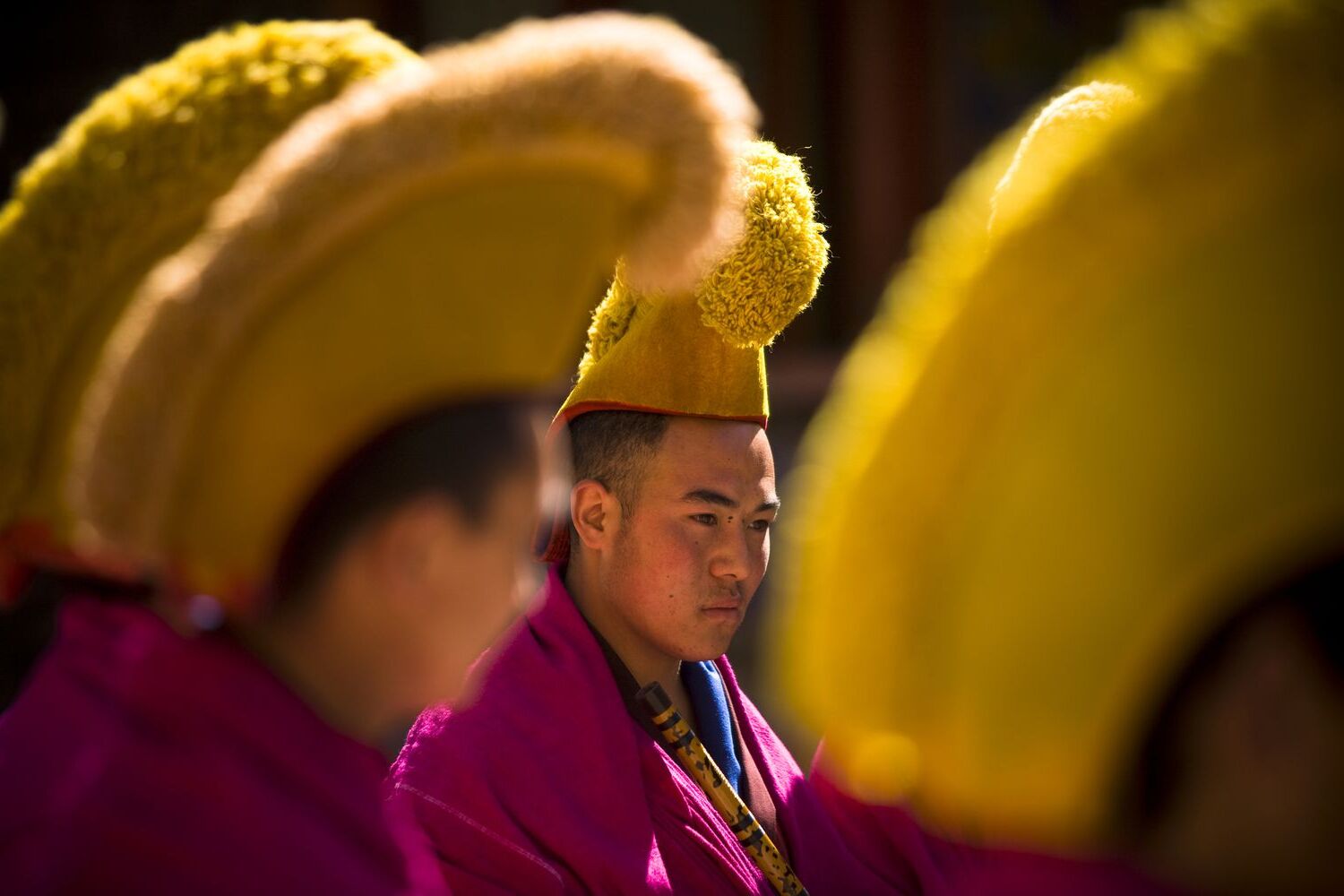
The Gelug Order, also known as the "Yellow Hat" sect, stands as one of the most influential schools of Tibetan Buddhism. Founded by Je Tsongkhapa in the late 14th century, this order emphasizes monastic discipline, scholarly study, and ethical conduct. Did you know that the Dalai Lama, the spiritual leader of Tibet, belongs to this order? The Gelugpa tradition has played a pivotal role in shaping Tibetan culture and spirituality. With its rich history and profound teachings, the Gelug Order continues to inspire millions around the world. Curious about more? Here are 22 fascinating facts that will deepen your understanding of this remarkable tradition.
Key Takeaways:
- The Gelug Order, also known as the "Yellow Hat" sect, was founded by Je Tsongkhapa in the 14th century. It emphasizes strict monastic discipline, scholarly study, and has had a significant impact on Tibetan Buddhism.
- The Gelug Order is known for its teachings and practices that focus on logic, debate, and meditation. It has spread its influence beyond Tibet and continues to evolve while maintaining its core principles.
Origins of the Gelug Order
The Gelug Order, also known as the "Yellow Hat" sect, is one of the major schools of Tibetan Buddhism. Founded in the 14th century, it has a rich history and unique traditions.
- The Gelug Order was founded by Je Tsongkhapa, a renowned Tibetan scholar and teacher.
- Tsongkhapa was born in 1357 in the Amdo region of Tibet.
- The name "Gelug" means "Virtuous Tradition" in Tibetan.
- The order emphasizes strict adherence to monastic discipline and scholarly study.
Key Figures in the Gelug Order
Several important figures have shaped the Gelug Order over the centuries. These individuals have contributed to its teachings, practices, and global influence.
- The Dalai Lama is the spiritual leader of the Gelug Order.
- The first Dalai Lama, Gendun Drup, was born in 1391.
- The current Dalai Lama, Tenzin Gyatso, is the 14th Dalai Lama.
- Panchen Lama is another significant figure within the Gelug tradition.
Teachings and Practices
The Gelug Order is known for its distinctive teachings and practices, which emphasize logic, debate, and meditation.
- The order follows the teachings of the Indian scholar Atisha.
- Gelug monks engage in rigorous debate as a form of intellectual training.
- Meditation practices in the Gelug tradition focus on analytical meditation.
- The order places a strong emphasis on the study of Buddhist philosophy.
Monastic Life
Monastic life in the Gelug Order is characterized by strict discipline, communal living, and a focus on education.
- Gelug monasteries are known for their large monastic universities.
- Drepung, Sera, and Ganden are three of the most famous Gelug monasteries.
- Monks in the Gelug Order follow a code of conduct known as the Vinaya.
- Monastic education includes the study of logic, philosophy, and ritual practices.
Influence and Spread
The Gelug Order has had a significant impact on Tibetan Buddhism and has spread its influence beyond Tibet.
- The order played a crucial role in the political history of Tibet.
- Gelug teachings have spread to Mongolia, China, and other parts of Asia.
- The Dalai Lama's exile in 1959 brought Gelug teachings to the global stage.
- Many Gelug monasteries and centers have been established worldwide.
Modern Developments
In recent years, the Gelug Order has continued to evolve and adapt to the modern world while maintaining its core principles.
- The Dalai Lama has been a prominent advocate for peace and human rights.
- The order has embraced modern technology to spread its teachings globally.
Final Thoughts on the Gelug Order
The Gelug Order stands out as a significant branch of Tibetan Buddhism. Founded by Je Tsongkhapa in the 14th century, it emphasizes strict adherence to monastic discipline and scholarly study. The Dalai Lama, a central figure in the Gelug tradition, plays a crucial role in both spiritual and political realms. The order's teachings focus on the Lamrim, a step-by-step guide to enlightenment, and the Vinaya, a code of monastic ethics. The Gelug Order's influence extends beyond Tibet, impacting global Buddhist practices. Understanding its principles offers insight into a rich spiritual tradition that values wisdom, compassion, and ethical conduct. Whether you're a seasoned practitioner or just curious, the Gelug Order provides a profound path to explore.
Frequently Asked Questions
Was this page helpful?
Our commitment to delivering trustworthy and engaging content is at the heart of what we do. Each fact on our site is contributed by real users like you, bringing a wealth of diverse insights and information. To ensure the highest standards of accuracy and reliability, our dedicated editors meticulously review each submission. This process guarantees that the facts we share are not only fascinating but also credible. Trust in our commitment to quality and authenticity as you explore and learn with us.
